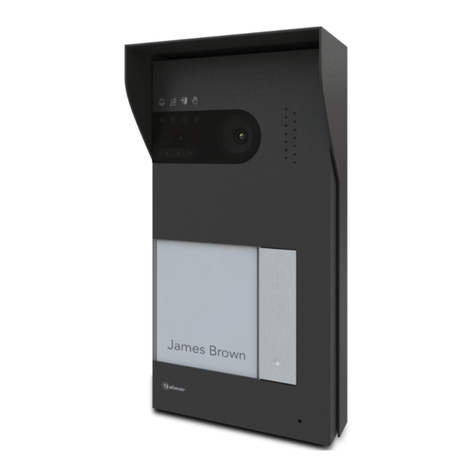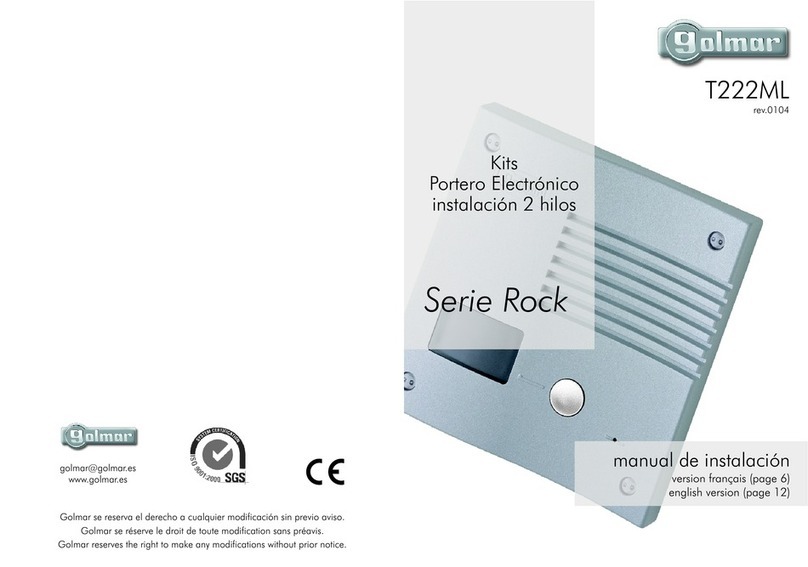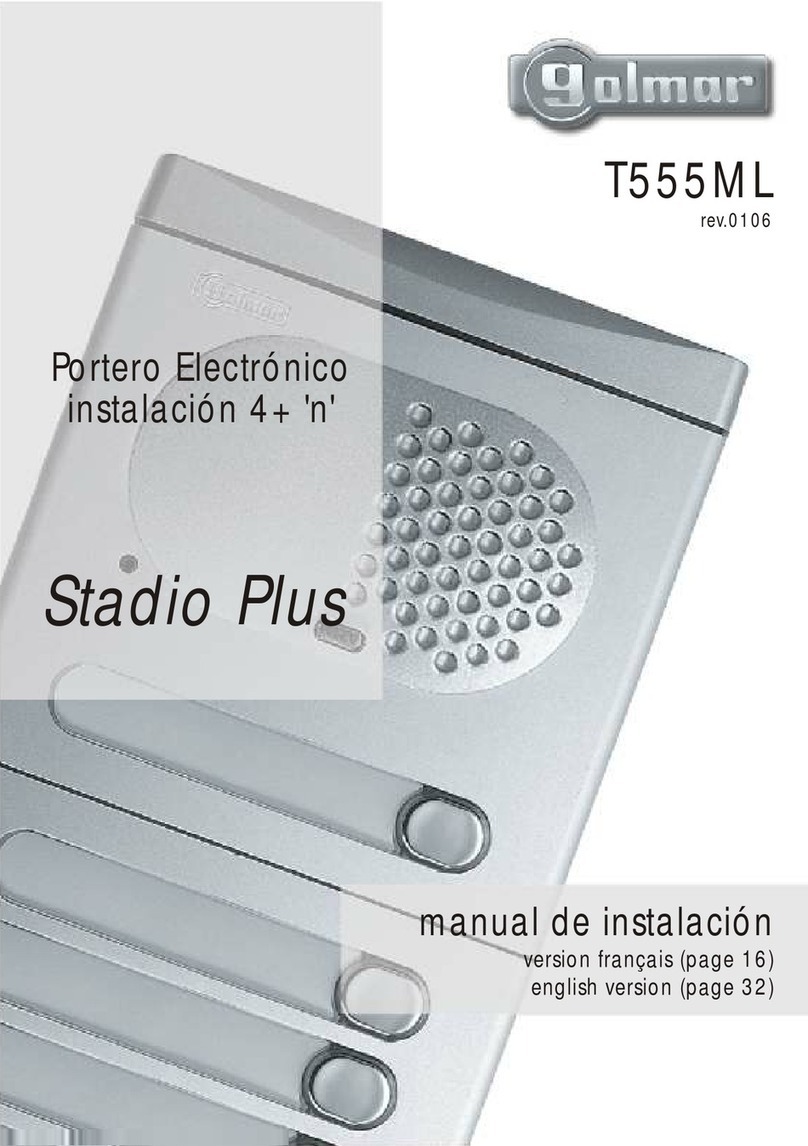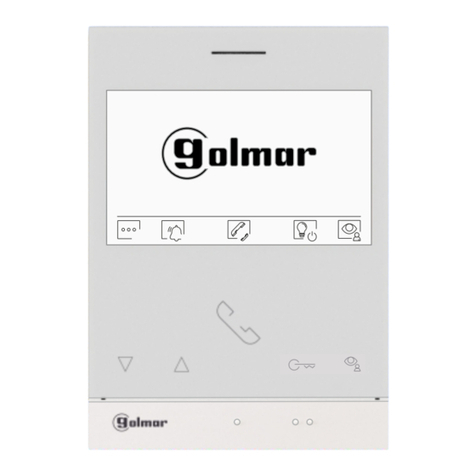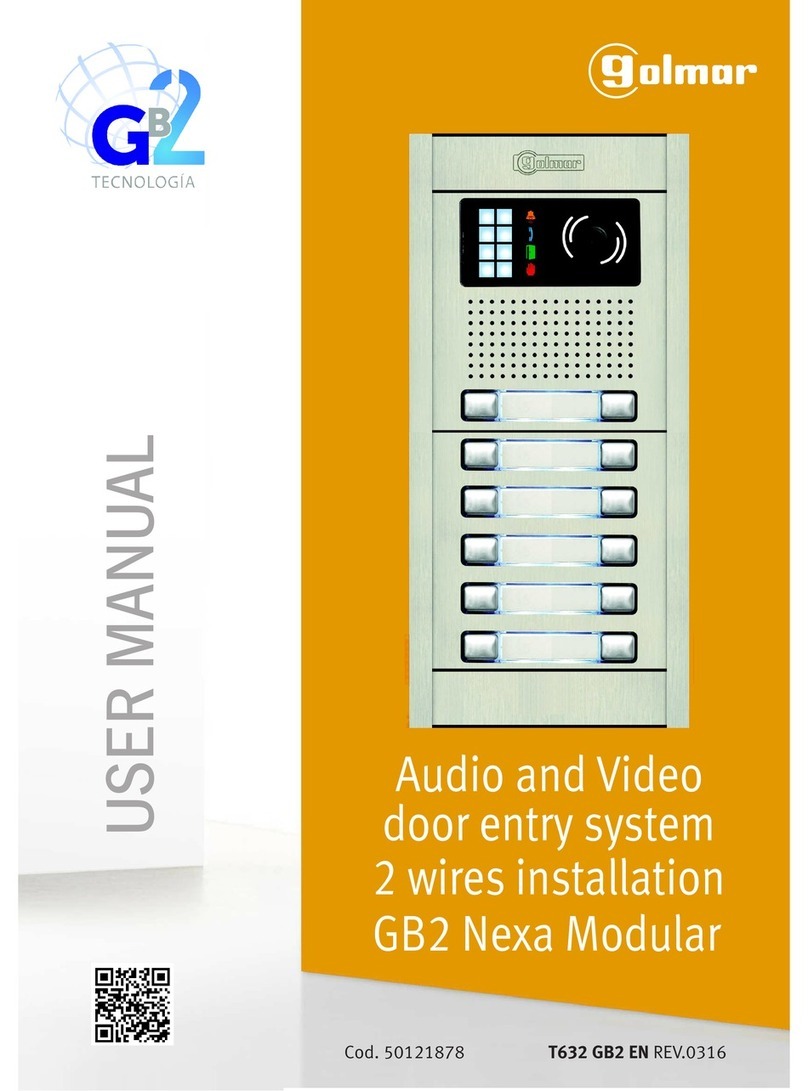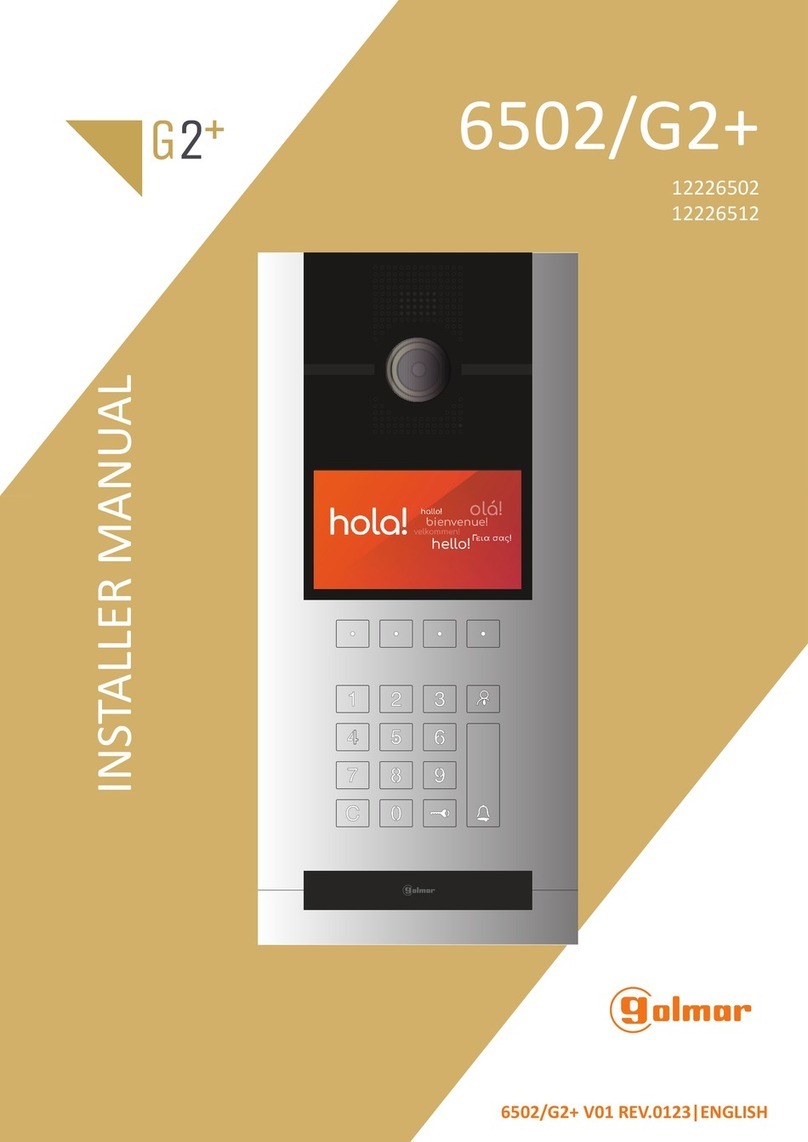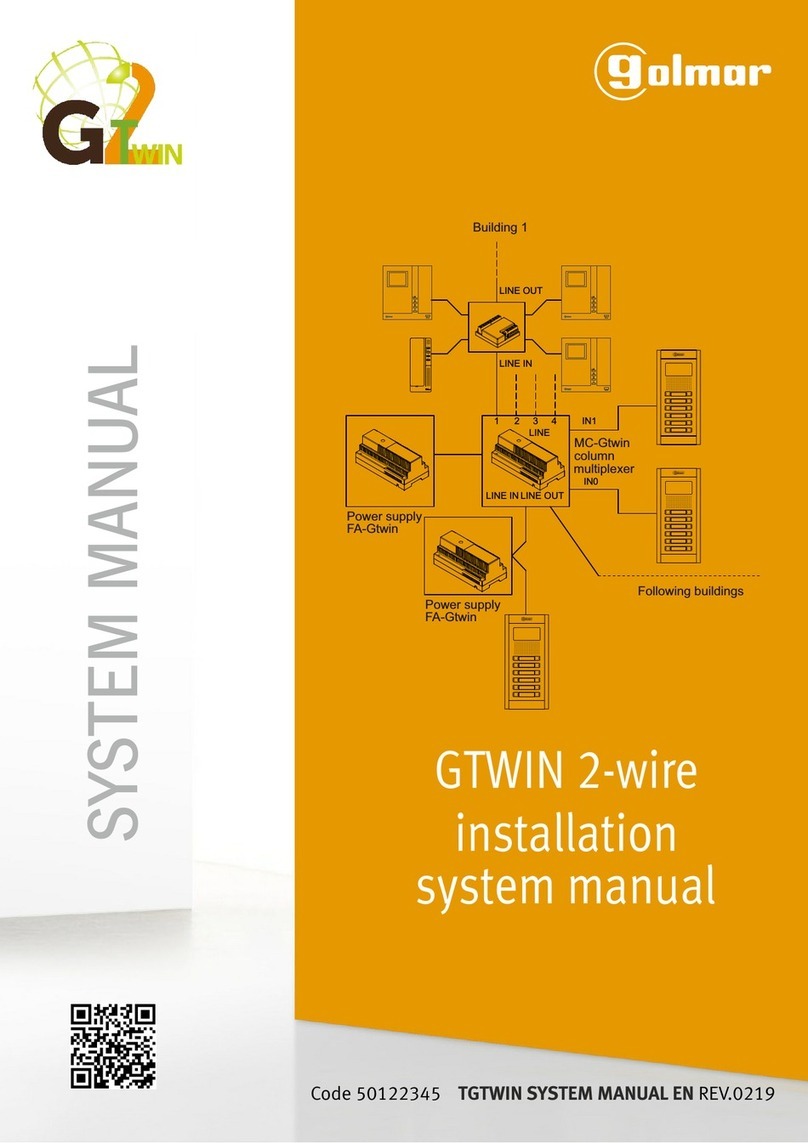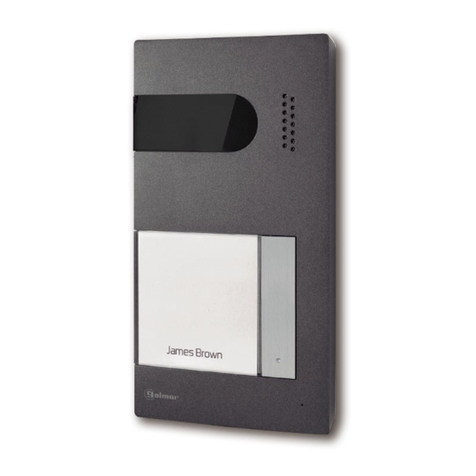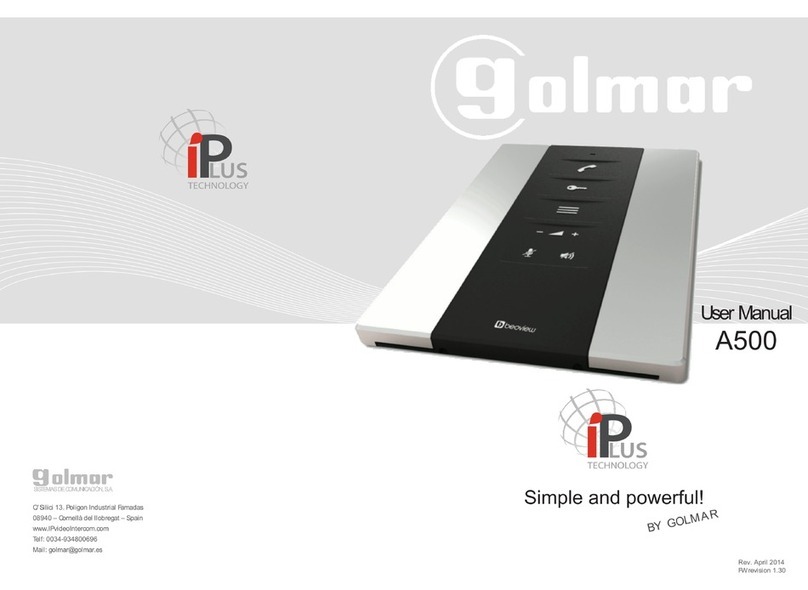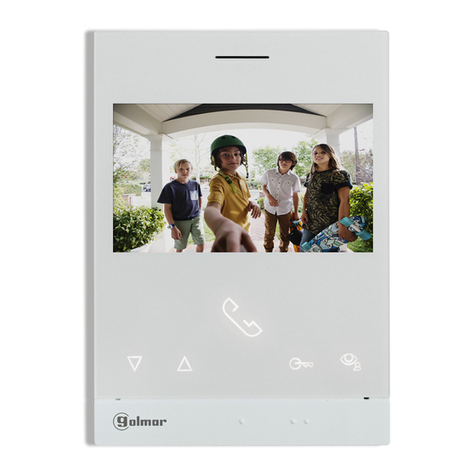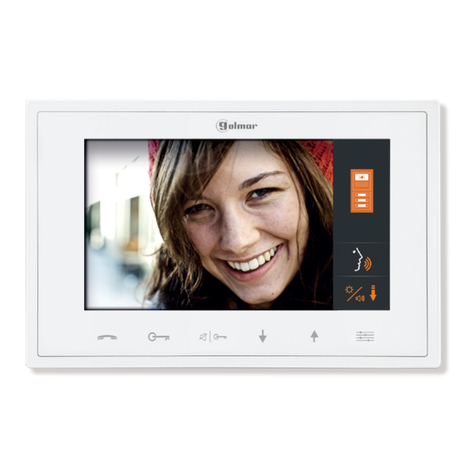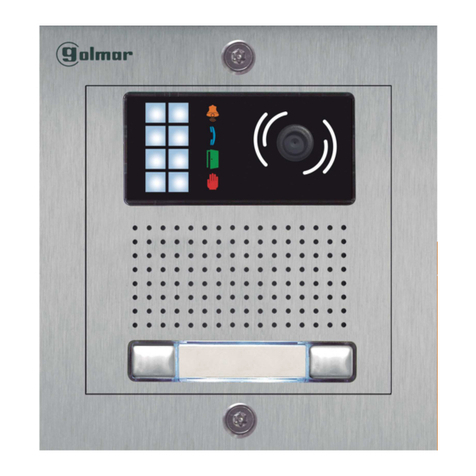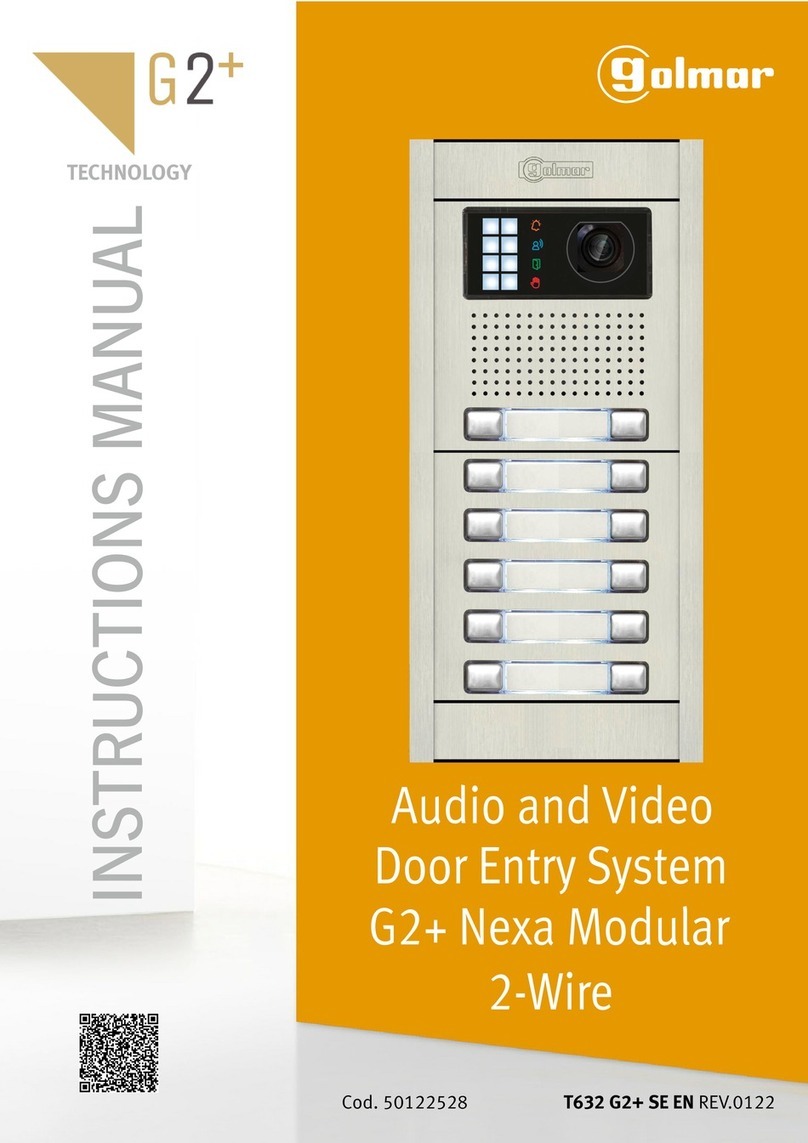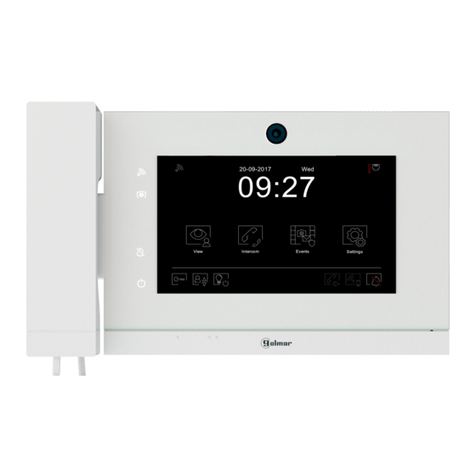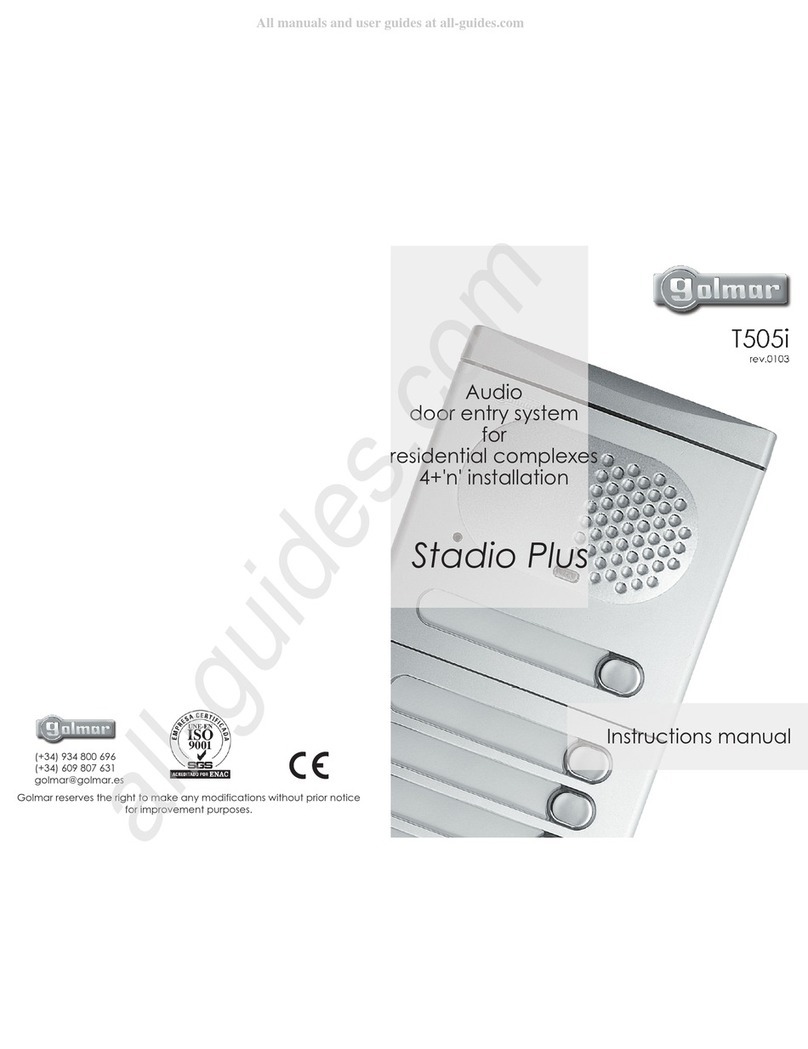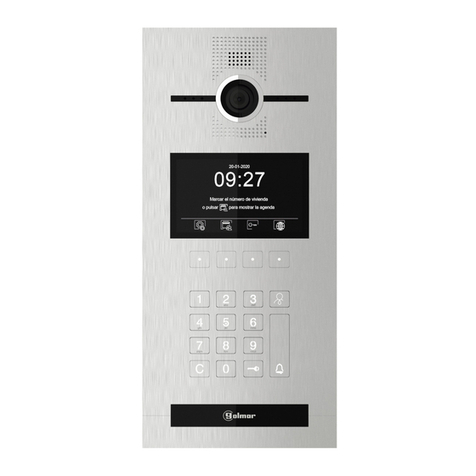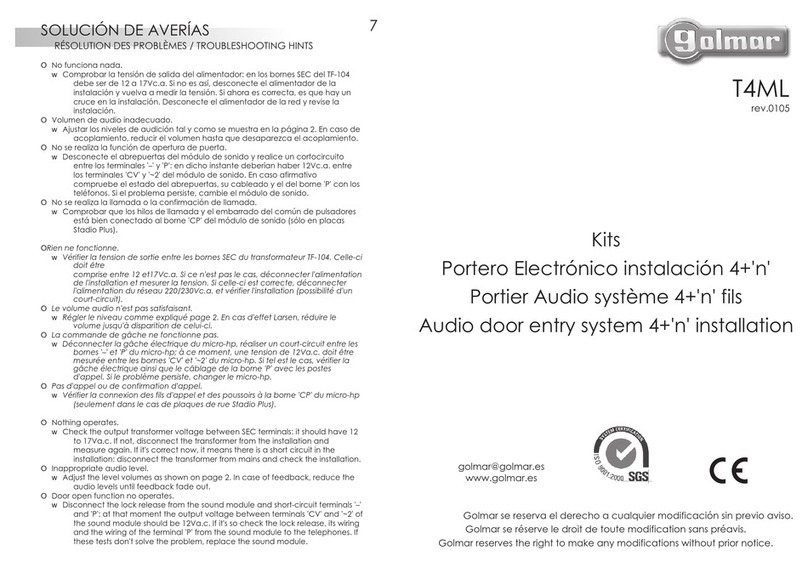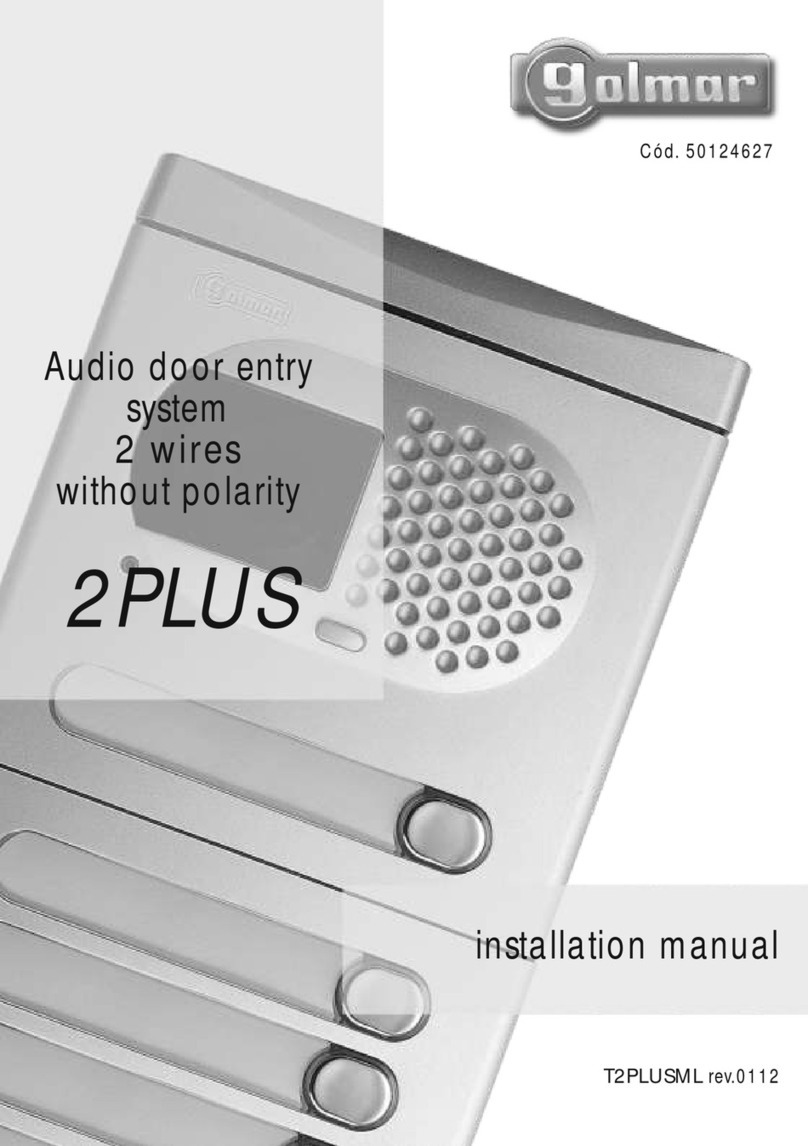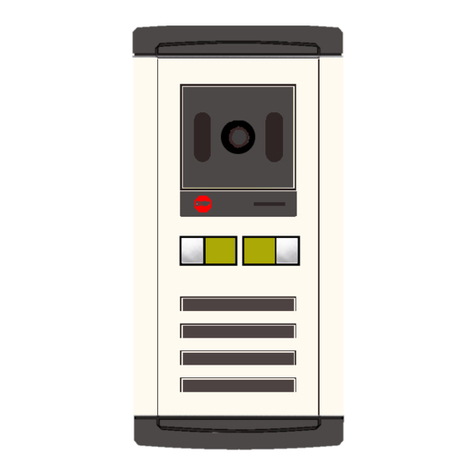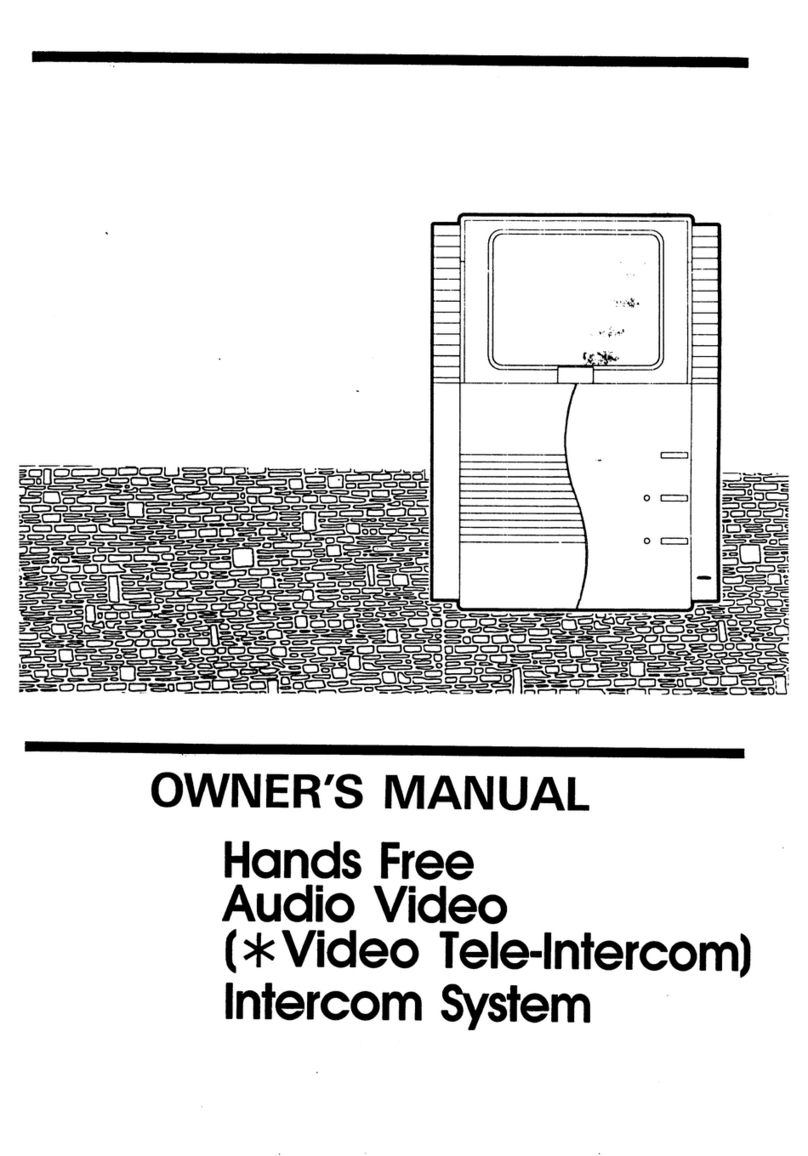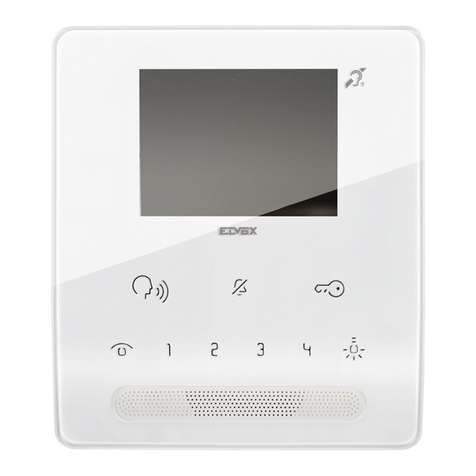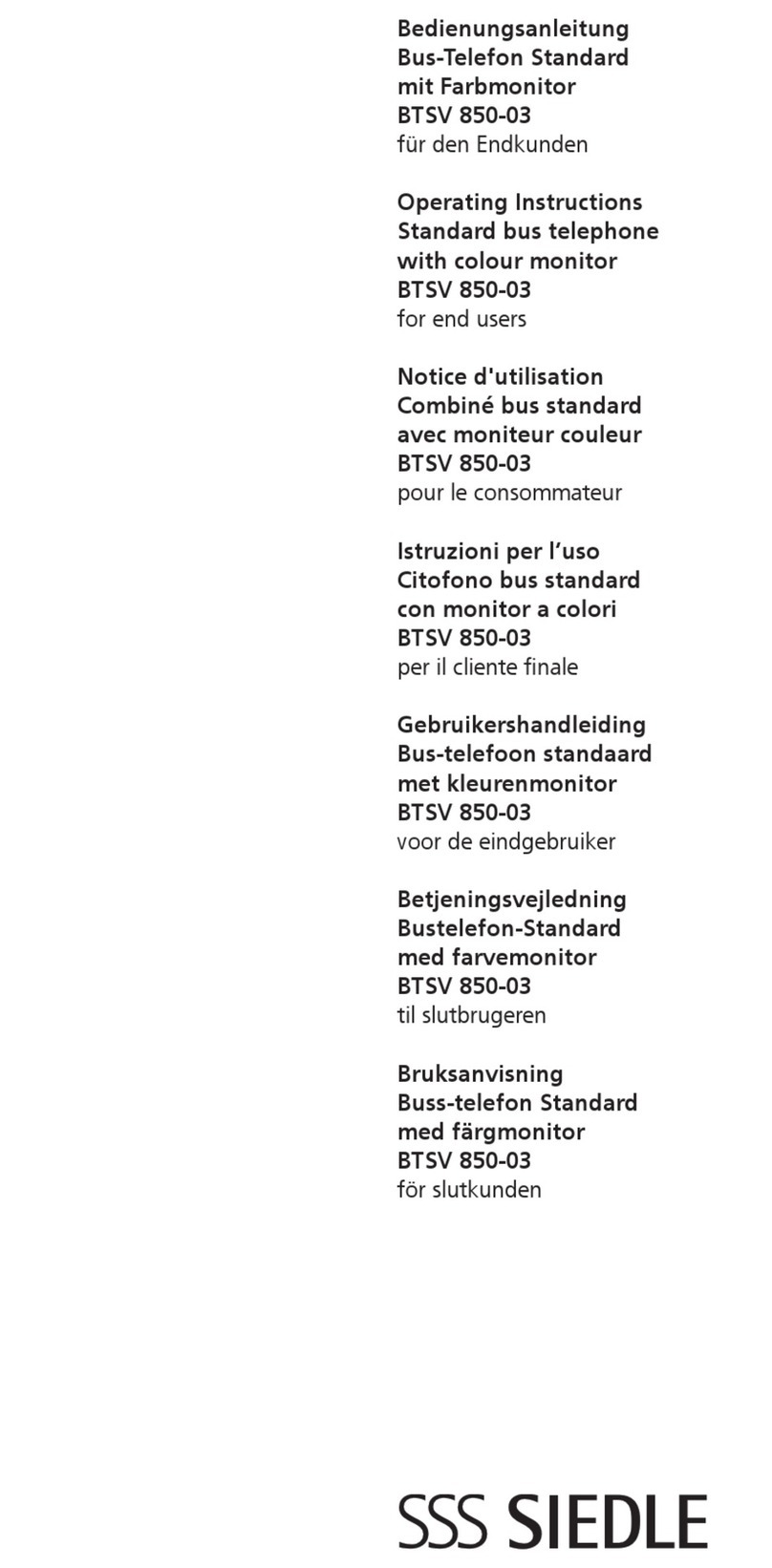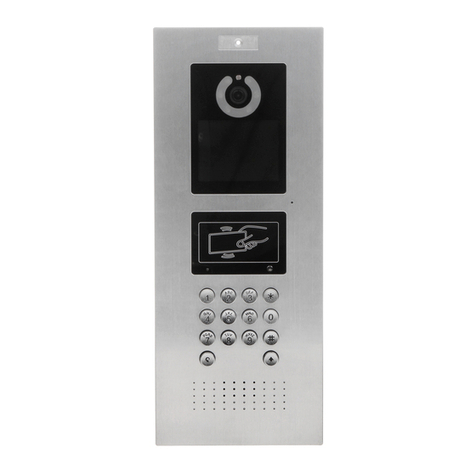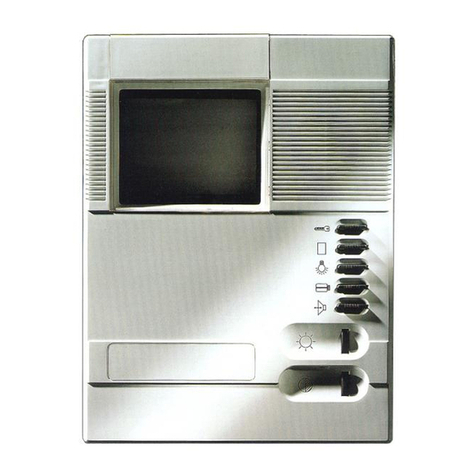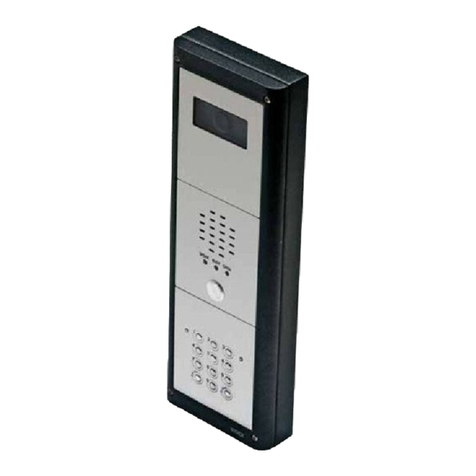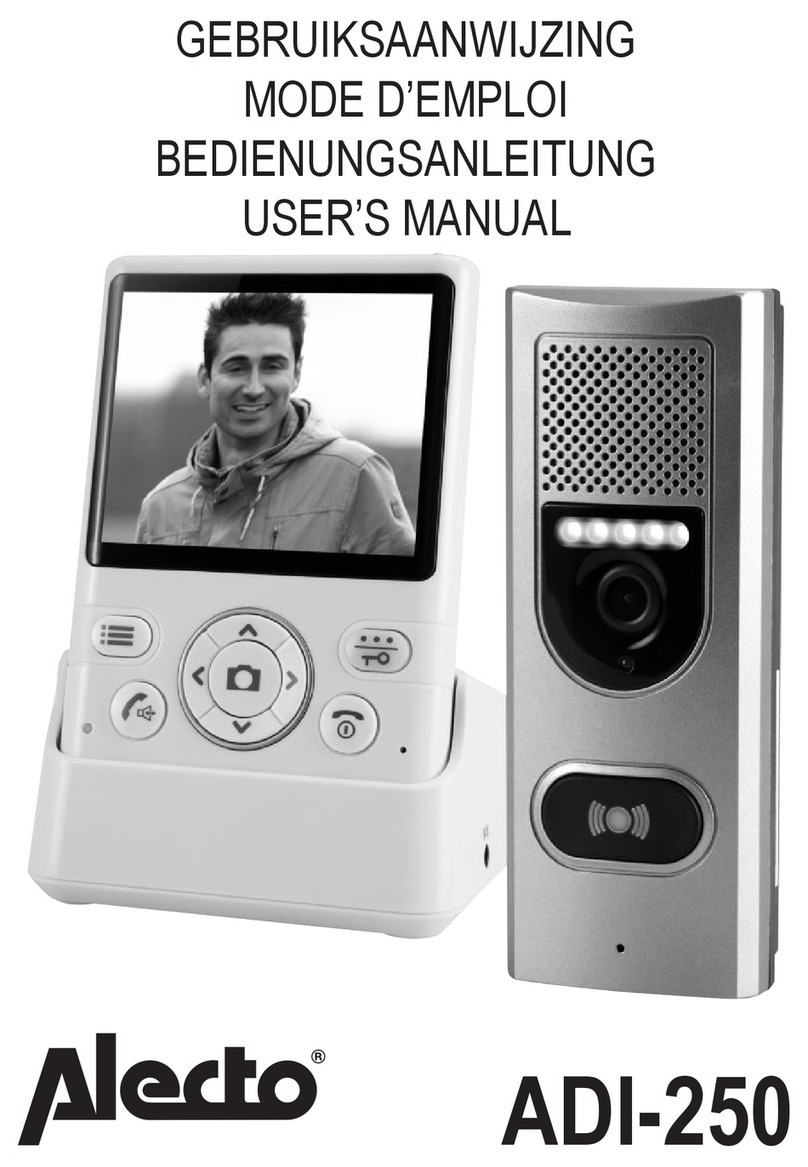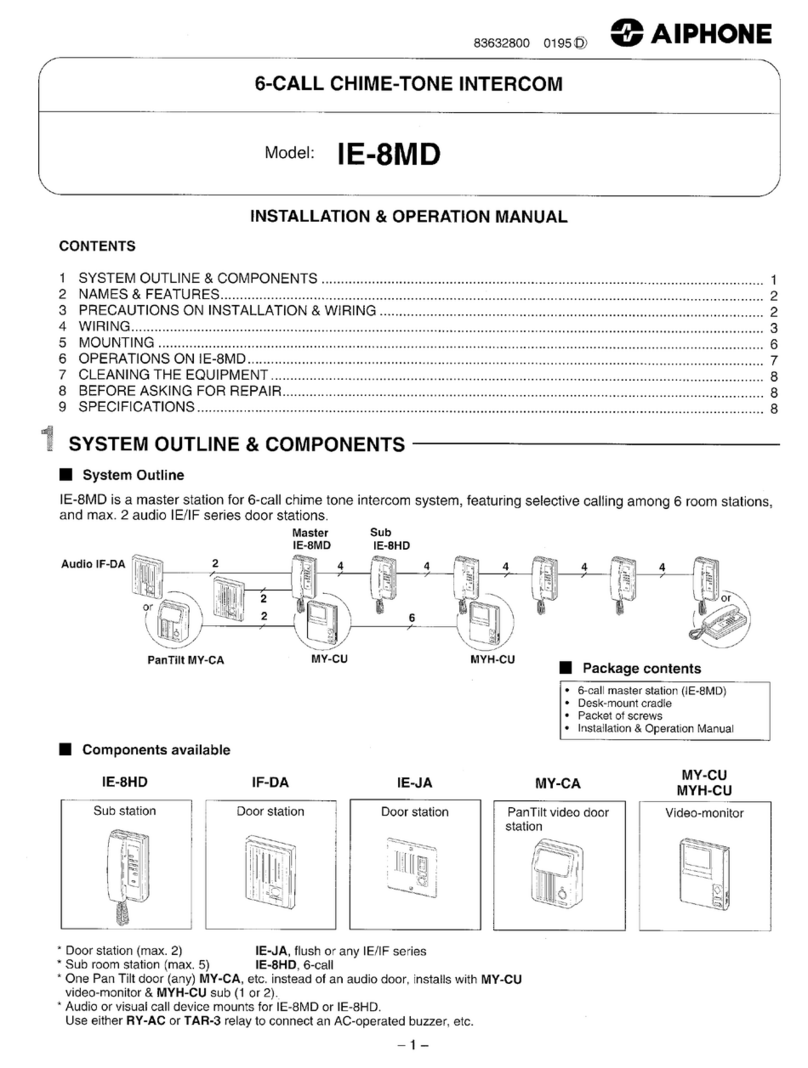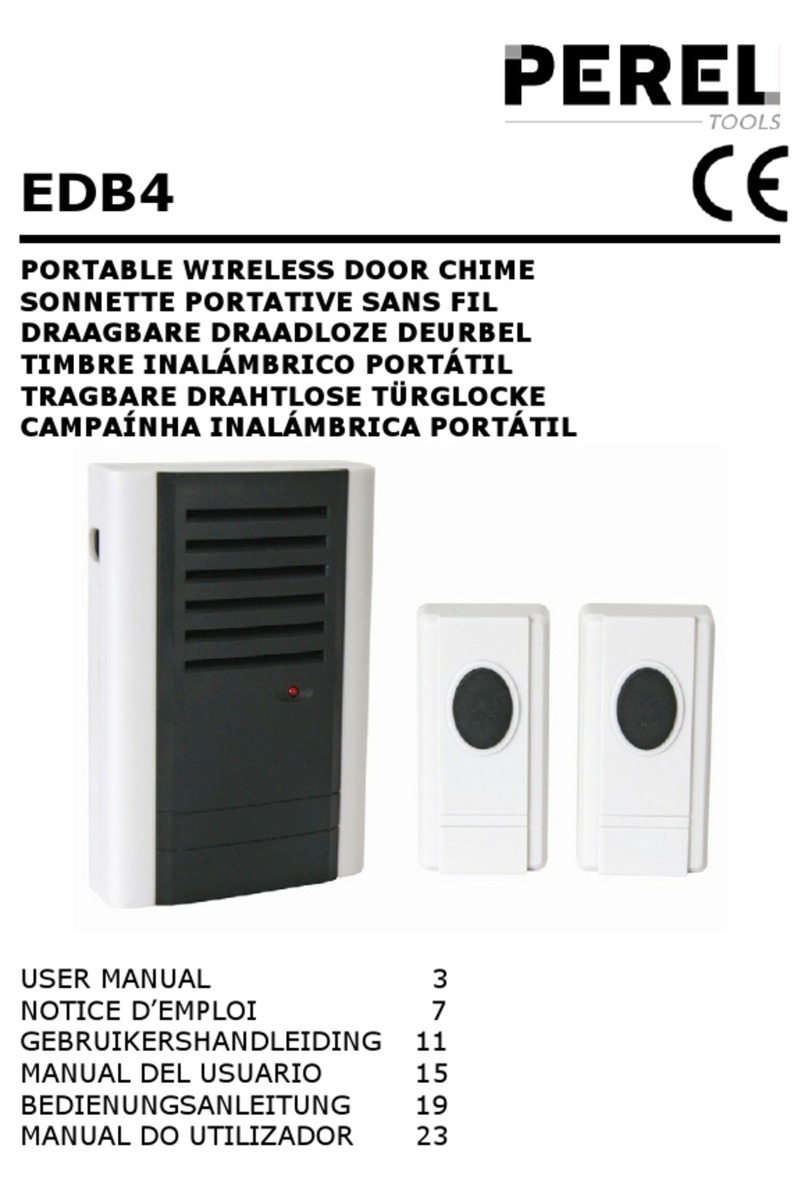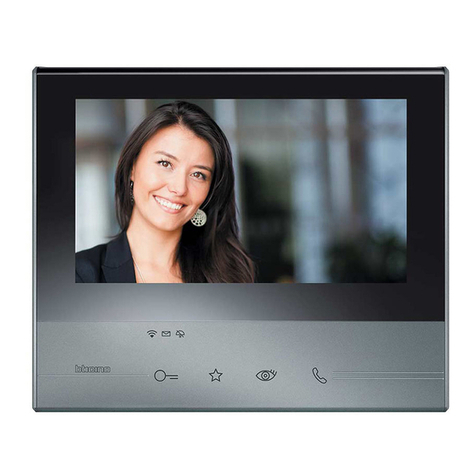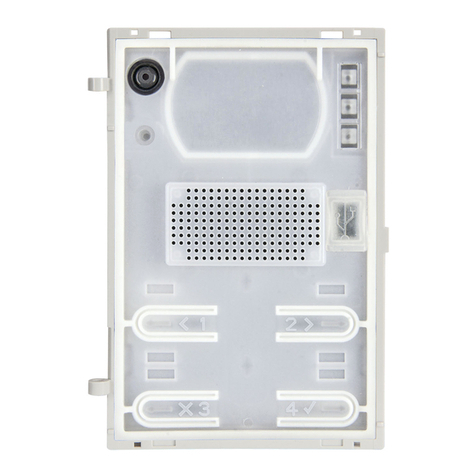SYSTEM OPERATION
One building systems.
OTo make a call, the visitor should key-in the three digits code corresponding to the apartment he wishes to
contact: the door panel display will show the sequence keyed-in. Once the code has been introduced,
press bell key to confirm the call: acoustic tones will be heard confirming the call is in progress and the
door panel display will show the message calling. At this moment the call will be received at the
monitor (telephone) in the dwelling. If an incorrect code has been keyed-in, press key and try again.
In systems with several access doors, the other(s) door panel(s) will be automatically disconnected: if a
visitor tries to call from other door panel an acoustic tone will be heard confirming the system is busy
and the door panel display will show the message busy.
The call tone will be reproduced on the monitor during 3 seconds: after this time the picture will appear
on the master monitor without the visitor being aware of this. To see the picture in a slave monitor press
the push button, dissapearing the picture on the other monitor. If the call is not answered in 45
seconds, the system will be freed.
OTo establish communication pick up the monitor (telephone) handset. The communication will last for
one and a half minutes or until the handset is replaced. During the communication the door panel
display will show the message communication. Once the communication has finished the
system will be freed.
OTo open the door, press the door release push button during call or communication progresses: with
one press, the door release operates during the programmed time. During the lock release
activation an acoustic tone will be heard on the door panel confirming the lock release is
activated, and the door panel display will show the message door opened.
OThe monitor and telephone push buttons description is shown on pages 132, 139 and 141 respectively.
Systems with general entrance door panel(s) and several internal buildings.
OTo make a call from a general entrance door panel, the visitor should key-in the five digits code
corresponding to the apartment building he wishes to contact: the door panel display will show the
sequence keyed-in. Proceed as described on the previous paragraph to establish the call progress.
The corresponding internal door panel and the other general entrance door panels (if exist): if a
visitor tries to call an acoustic tone will be heard confirming the system is busy, and the door panel
display will show the message busy. The rest of door panels are free to establish communication.
OTo make a call from an internal door panel proceed as described on the previous paragraph. The rest
of internal door panels are free to establish communication. A call from the general entrance door
panel can be made to any of the internal buildings, except to the one is in communication.
Use of the repertory names.
OIf the visitor don't know the code of the apartment he wishes to contact, he could find it on the
repertory name by searching through the arrow keys. Once the code has been found, the call can
be made by pressing the bell key. Refer to page 129 for details about fast repertory searching.
Lock release activation using the access control.
OTo open the door using the access control facility, press KEY symbol and one of the valid access
codes. During the lock release activation an acoustic tone will be heard on the door panel
confirming the lock release is activated, and the door panel display will show the message door
opened. If an incorrect code has been keyed-in, press key and try again. The introduction
of three wrong consecutive codes freezes the access control during 60 seconds.
112
SYSTEM CHARACTERISTICS 111
OMicroprocessed systems with bus installation (no call wires):
wAudio system with 4 common wires installation.
wVideo system with 3 common wires plus coaxial cable.
wVideo system with 4 common wires plus twisted pair cable.
OUnlimited number of door panels (access) being not necessary the use of switching units.
OUp to 1000 monitors/telephones per installation or backbone.
O
O
O
O
O
O
OAcoustic busy channel and call acknowledgement signals.
OTimed door open activation.
Od.c. lock releases activation.
OUp to three monitors or telephones in the same apartment without additional power supplies.
OWith Platea/Tekna Uno monitors or T-740 Uno telephones:
wPrivacy on audio and video communications.
w'Autoswitch-on' function (only monitor).
w'Video-Spy' function remaining the communication channel free (only monitor).
wCall to master porter's exchange.
wInput for door bell apartment push button.
wB/W & Color monitor.
wBrightness and contrast control (color control in case of color screen).
OWith Platea/Tekna Plus monitors or T-740 Plus telephones, addition to the above features:
wThree-position control for call volume: maximum, medium and minimum (off only T-740 Plus).
wInput for external door release push button (only T-740 Plus).
wIntercommunication function with other monitor or telephone of the same apartment.
wOutput for additional call repeater.
wCall to slave porter's exchange.
wPanic call to the porter's exchange.
wDifferent call reception tones depending where the call is comming from: main or slave door
panels, door bell push button, intercom, ....
wActivation of two auxiliary devices: secondary telecamera, courtesy light, ...
wThe T-740 Plus telephone, allows one of these functions at once (see page 139):
w
Management of up to 255 internal buildings.
New programming menu structure (ver. 5.00 or later).
Direct Call Code that allows to use a different call code from the one recorded on the monitor or
telephone (page 121).
'Repertory:insert' function, that allows to keep sorted the repertory content (page 127).
Transmission of the repertory content to other panels or porter's exchanges through the installation
wires (page 128).
Third access control code with time restriction (page 125).
OText edition using the keypad as a mobile phone (page 129).
OPrevious software versions of the Ver. 5.00 are fully compatible, except when the Direct Call
Code is activated or the number of internal buildings is bigger than 99.
'Autoswitch-on' function.
wOutput for auxiliary relay activation (18Vdc/0,5 A maximum).
wCall to a slave porter's exchange.
wIntercommunication function with other monitor or telephone of the same apartment.

